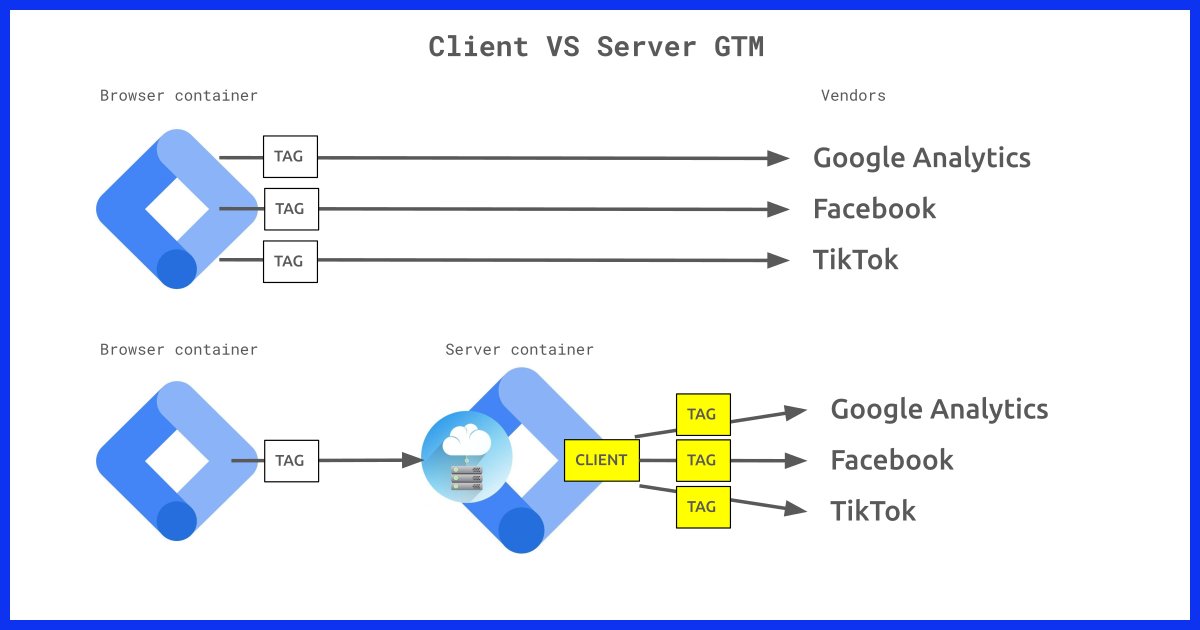Server-side tagging is a technique of Google Tag Manager that has seen dramatic growth in recent years. In server-side tagging, alongside the traditional browser container, we utilize another container known as the server container, which operates not within the browser but on Cloud Servers, typically on Google Cloud or similar infrastructures.
In server-side tagging, information isn’t sent directly from the browser to each provider (such as Google Analytics, Facebook, etc.). Instead, it is sent to the server container, which processes it and then forwards it to one or more providers (data stream consolidation).
By shifting the data processing load to the server rather than the browser, our webpage becomes lighter and more secure. This alone is highly significant, but it’s not the only, nor the most critical aspect.
Most importantly, the information reaching advertising platforms from the server container is more comprehensive, significantly enhancing targeting, retargeting, and overall campaign effectiveness.
Key Concepts
The most important entity in server-side tagging is the “Client“.
Tags, triggers, and variables were the primary structures in the traditional browser container. They exist here too, but here the dominant player is the Client. A Client is the entity that receives the request reaching the server and typically, with the help of certain tags, forwards it to the appropriate provider.
The core concept is that we use a single tracking method in the browser (usually GA4) and transmit it to the server. There, this information is processed and sent not only to Google Analytics but also to other providers, typically advertising platforms (Google Ads, Facebook, TikTok, etc.). This technique is often referred to as data stream consolidation.
Do All Platforms Support Server-Side Tracking?
Not all yet, but many major platforms like Google Analytics, Google Ads, Facebook, and TikTok do. A full list is available on What platforms support Google Tag Manager server-side tagging.
Looking for a Course?
Knowcrunch offers a comprehensive Masterclass in Google Tag Manager, covering all aspects of GTM with detailed references to Server-Side Tagging.
Benefits
- Lighter, faster website
- Enhanced security
- Reduced impact of ad blockers
- Improved first-party cookie context
- Better campaign results due to controlled data flow
Drawbacks
- Hosting costs for the server container
- Required technical knowledge
- More complex debugging (using two containers)
Hosting Options
- Google Cloud
- Stape.io
- Amazon AWS
- Microsoft Azure
- Any server in theory
Cookie Consent
Server-side tagging is not a “method to bypass user consent,” as some mistakenly believe. Consent is still necessary within the browser.
Conclusion
Therefore, we are dealing with a very dynamic field of knowledge and applications. Changes will be dramatic in the coming years. It will be a central issue in the realm of Technical marketing and obviously Digital marketing as well.
Looking for a Course?
Knowcrunch offers a comprehensive Masterclass in Google Tag Manager, covering all aspects of GTM with detailed references to Server-Side Tagging.
